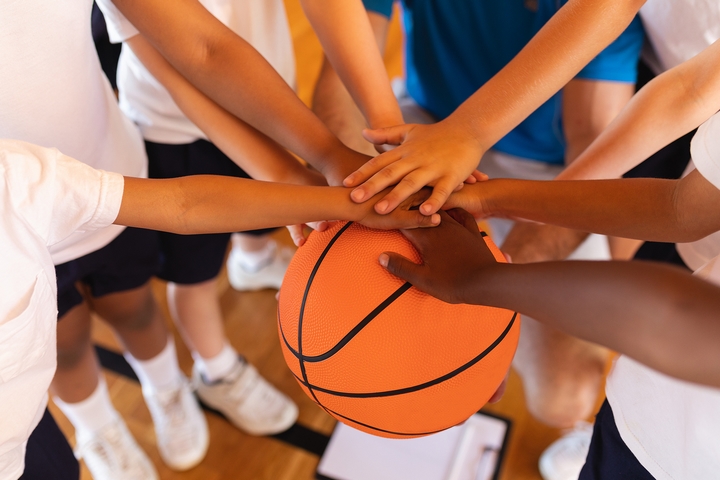Safety at school sporting events is important for parents, students, and staff. With large crowds and a mix of excitement, creating a secure environment is essential. Clear and practical security policies help protect everyone involved. Strong safety measures can lower risks and improve the experience for athletes and spectators.
Here are some security policies for sports events at schools:
Access Control
First, schools need to control who can enter sporting events. Clear entry points help set boundaries and give security staff a place to check who enters. Schools can create ticketing procedures and ensure staff or volunteers are at entrances to monitor attendees. This way, only authorized people can attend, improving safety.
Using technology like ticket scanners can speed up gate entry. Faster entry encourages attendance and helps avoid problems. Schools should also clearly communicate event rules to reduce confusion. Signs explaining entry procedures and listing prohibited items help everyone understand the safety measures.
Weapons Detection Systems
Modern security includes weapons detection systems for schools, which help keep sports events safe. These systems provide extra entrance protection by scanning for weapons without slowing entry.
Using these systems shows that schools are committed to safety. Parents and students can feel secure knowing that measures are in place to prevent weapons from entering. A safe school event lets everyone enjoy the game and focus on the athletes’ efforts.
Crowd Management
Good crowd management creates a fun atmosphere without compromising safety. Schools should have a plan for larger events with many attendees. This plan includes placing staff in key locations to monitor the crowd and respond quickly if issues arise.
Designating specific areas for spectators helps control crowds and reduce overcrowding. Marking these areas prevents confusion and keeps order. Training staff in de-escalation techniques prepares them to handle disruptions calmly. Encouraging respectful behaviour among attendees leads to a better experience for everyone.
Emergency Response Plans
Having an emergency response plan is vital for sports event security. Schools need procedures for different situations, such as medical emergencies or severe weather. Regular drills help personnel respond quickly and effectively.
Working with local emergency services improves communication and response. Familiarizing staff with the venue layout and evacuation routes reduces confusion during emergencies. Sharing this information with attendees through printed materials or announcements promotes safety and preparedness.
Communication Systems
Clear communication enhances security during sports events. Schools should have systems to share information among staff and security quickly. Walkie-talkies or two-way radios enable real-time updates for a swift response to any situation.
It is also important to have clear communication channels for staff and attendees. Announcements during events keep everyone informed about updates or procedures. Signs that provide contact points for security or emergency help promote awareness and encourage community responsibility for safety.
Training and Awareness
Ongoing training is essential for adequate security. Schools should prepare staff on the best practices for event security. This includes recognizing possible threats, managing crowd behaviour, and responding to emergencies. Regular workshops or seminars keep everyone informed and engaged.
Encouraging awareness among attendees helps build a culture of vigilance and responsibility. Schools can share information about reporting suspicious behaviour and promote discussions about safety. An informed audience greatly enhances the overall security of the event.
First Aid and Medical Services
It’s important for schools to have accessible first aid and medical services during sporting events. Designating a clearly marked first aid station ensures that medical assistance is readily available if needed. Trained medical personnel should be on-site to handle any health-related incidents or emergencies.
Communication about the location of medical services should be clear, allowing attendees to quickly find help when necessary. This proactive approach to health and wellness contributes to a safe atmosphere for everyone involved.
Behavioural Expectations and Code of Conduct
Setting and communicating clear behavioural expectations is crucial for promoting a positive environment at school sporting events. Establishing a code of conduct that outlines acceptable behaviour helps create an atmosphere of respect and sportsmanship.
Schools should share this code with attendees before events and display it throughout the venue. Encouraging positive interactions among spectators, athletes, and staff fosters a supportive community, enhancing everyone’s overall experience.
Parent and Community Engagement
Engaging parents and the community in safety efforts is vital for the success of school sporting events. Schools can organize meetings or workshops to discuss security policies and gather feedback from parents. Involving the community creates a sense of shared responsibility and promotes a collective effort to ensure safety.
Schools can also encourage parents to volunteer as event staff or security, strengthening connections and promoting a cooperative environment that prioritizes safety for all attendees.




